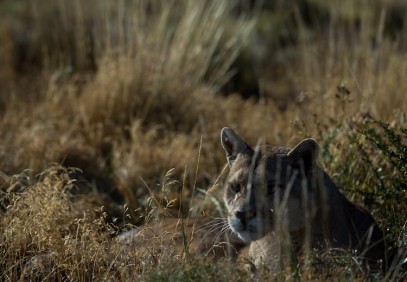available in Patagonia
offering Safaris
Reserves and Wildlife
Areas
Overview
The region of Patagonia, in the southern cone of South America, straddles both Chile and Argentina. It begins south of the Chilean city of Puerto Montt and the Argentinian Colorado River and ends in Tierra del Fuego. A wild and dramatic wilderness, Patagonia is one of the most sparsley populated regions in the world with a population density of approximately 1-2 persons per square kilometres. It’s wild natural beauty offer a wealth of experiences to uncover.
The region is packed with diverse landscapes. On the Argentinean side of Patagonia there are three regions: the very mountainouse Andean Patagonia, Central Patagonia which is mostly plains, and coastal Atlantic Patagonia. Chilean Patagonia, divided into Northern and Southern regions, is mainly mountainous with a rugged coast comprised of many channels, fjords and islands. The Northern and Southern Icefields are located along the Andes, mainly in Chile with some branches of the southern extending into Argentina.
Torres del Paine National Park, in Chilean Patagonia, is one of the largest and most visited national parks with its distinctive three granite peaks and spectacular scenery of mountains, glaciers, rivers, lakes and valleys. The most common mammals found in the park are guanacos as well as foxes, the fully protected puma and the endangered Chilean Huemul or South Andean deer. There are breeding populations of 15 birds of prey including the Andean condor. Explore this incredible area on a hike, by bike, kayak or horse riding or join a guided wildlife trip to search for the elusive puma.
Whales found in the waters around Patagonia are humpback, southern right, orca and blue whales. Argentine Patagonia’s Valdes Peninsula nature reserve is a hot spot for southern right whales which come here to mate and breed between early June and the beginning of November, the largest number collecting in September and October. This type of whale is differentiated from other cetaceans as it has no dorsal fin and callosities on the head. The orcas found here are renowned for beaching themselves in order to hunt sea lion pups.
There are a number of hot spots for penguins. Magellanic penguins can be seen, amongst other places, on Isla Magdalena, where you can walk amongst the colony (in roped off areas), Isla Marta, also home to sea lions, elephant seals and a huge variety of birdlife, Chiloe Island, where humboldt penguins also nest and Martillo Island, where you might see gentoo and king penguins too.
Travel Seasons
- Sep – Dec – Spring. The scenery is blooming and green, the wildlife is at its most active and there are less visitors than the height of summer. November is when horse riding and rafting start up again.
- Dec – Mar – Summer. Generally good weather with longer days, but with the infamous wind. One of the most popular times to visit so it’s important to book in advance. It’s a great time for adventurous activities and trekking.
- Mar – Jun – Autumn. Beautiful autumn colours and sunrises/sunsets. The winds are dying down. Less visitors so prices may be reduced as the season is comes to an end in April.
- Jun – Sep – Winter. Visitors are few, the winds have gone and you can enjoy the scenery in peace and quiet. Some places close for the winter months. July is the best month for skiing.
General Information
- Largest cities – Neuquén and Comodoro Rivadavia (Argentina), Punta Arenas (Chile)
- Currency – Argentine Peso, Chilean Peso
- Language – Spanish
- Size – 1,043,076 sq km
- Population – 1,999,540
Health & Safety
- Travel insurance is essential for all international travel. Click below to find out more:

- The CDC recommends the following vaccinations for Patagonia (Argentina/Chile): hepatitis A and typhoid. Check with your doctor which other vaccinations you might need and make sure your routine vaccinations are all up-to-date.
- Zika is a risk in Argentina. Zika infection during pregnancy can cause serious birth defects. Therefore, pregnant women should not travel to Argentina. Partners of pregnant women and couples planning pregnancy should know the possible risks to pregnancy and take preventive steps. Find out more information here >>
- It is best to stick to drinking bottled water.
Pros
- Remarkable natural environment
- Wide range of activities throughout the year
- Marine and terrestrial wildlife
Cons
- The summer season is busy so book well in advance
Arriving in Patagonia
- International visitors fly into either Santiago, Chile to visit Chilean Patagonia or Buenos Aires, Argentina to visit Argentine Patagonia, and then take a connecting flight into Patagonia.
- There is a airport tax to pay – USD29 in Argentina, USD18 in Chile (please check before you travel as prices may change).
Getting Around
- With distances being so large, internal flights are the best way to travel around Patagonia.
- There are international car rental companies in major towns.
- For an inexpensive way to travel around there is a network of local buses.
Visas
- Visas are not required for travellers from the UK, USA, Canada and other countries. You may need to provide proof of onward or return travel. Check visa requirements for Argentina and Chile before you travel.
Login to your account
Register as a traveller if you are looking for deals
Register as a travel partner if you offer amazing safaris















